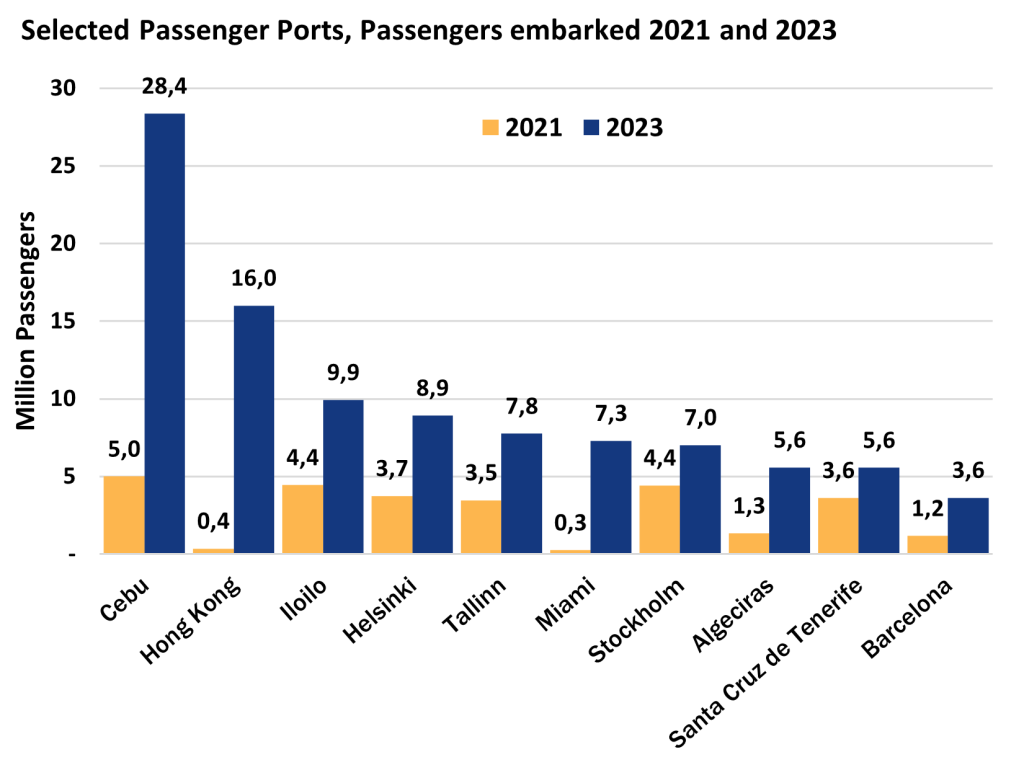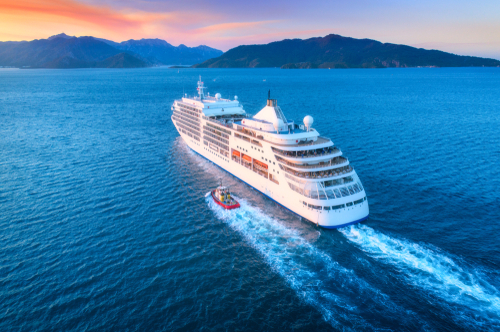According to the Institute of Shipping Economics and Logistics (ISL) the cruise ship fleet is growing both in terms of the number of ships and passenger capacity.
This development is also reflected in the launch of the largest cruise ship to date at the beginning of this year, the Icon of the Seas, which was built by Meyer Werft in Turku, Finland, on behalf of Royal Caribbean International and is currently the world´s largest cruise ship with a length of 365 meters and a passenger capacity of 7,600. MSC will also be entering this size category in 2025 with the MSC World America for just under 6,800 passengers, ISL notes.
To put the size of the different types of passenger ships into perspective, ISL mentions that it is interesting to note that the total weight of the 412 cruise ships included in the ISL statistics is around 28.9 million GT, which corresponds to an average size of 70,200 tons per ship, which is more than ten times the average size of the RoRo and cargo/passenger ships included in the passenger ships, namely just over 6,200 GT. The passenger-only ferries average just under 900 GT.

While the number of cruise passengers in 2022 was still more than 30% below the 2019 level, last year it rose to almost 31.7 million passengers, which is almost 107% of the previous record year before the coronavirus pandemic and, according to the Cruise Lines International Association (CLIA), more than six times the number in 2021 at the height of the pandemic (4.8 million passengers).
Against the backdrop of these very good results, the shipyards were able to report 11 newbuilding orders in the first half of this year alone, including two ships being built at Meyer Werft, each with a capacity of just under 5,400 passengers and 182,000 GT. However, all other newly ordered units are significantly smaller with a size of less than 100,000 GT, ISL highlights.
The ferry market comprises a fairly diversified group of subtypes. In addition to the pure passenger ferries and the pure ro-ro ferries, “ro-pax car ferries” can carry passengers, freight and vehicles (freight and passengers), usually on short sea routes.
The ro-pax/car ferry fleet in particular has seen steady, moderate growth over the last 10 years. At the beginning of 2024, the number of ships of this type worldwide was 3,246, with a total capacity of 20.2 million gross tons and an average passenger capacity of 488, ISL concludes.
































































